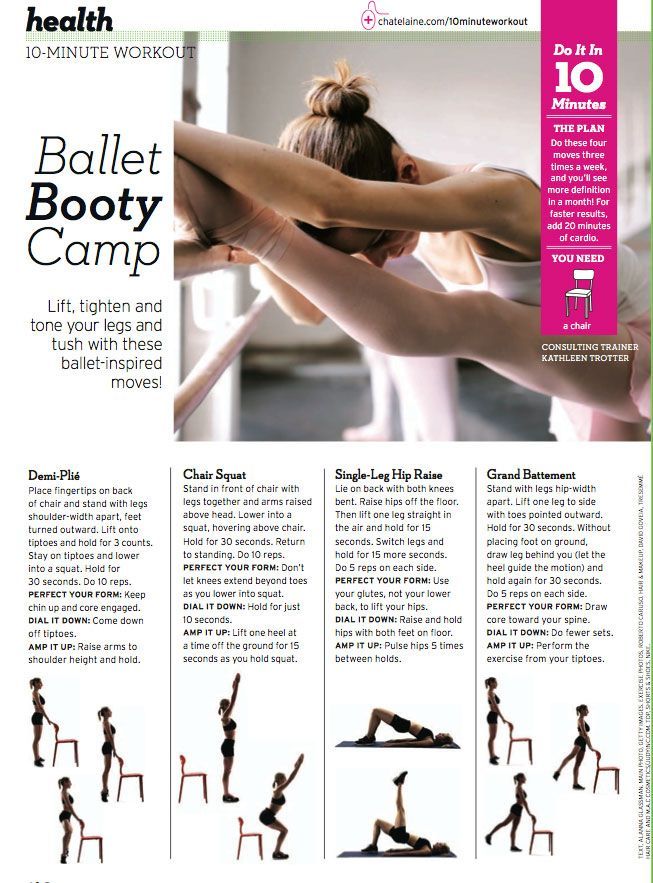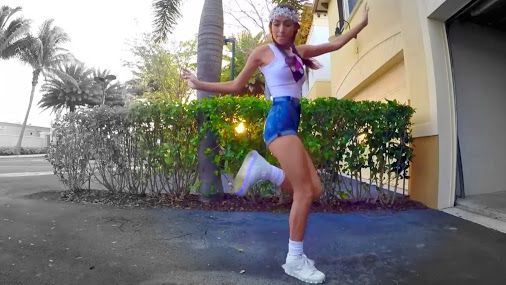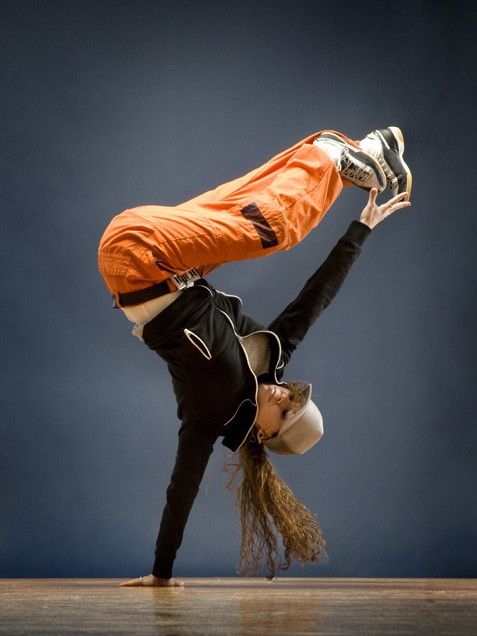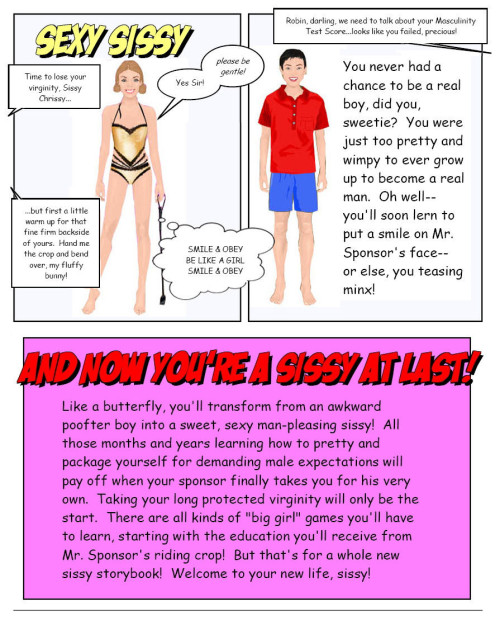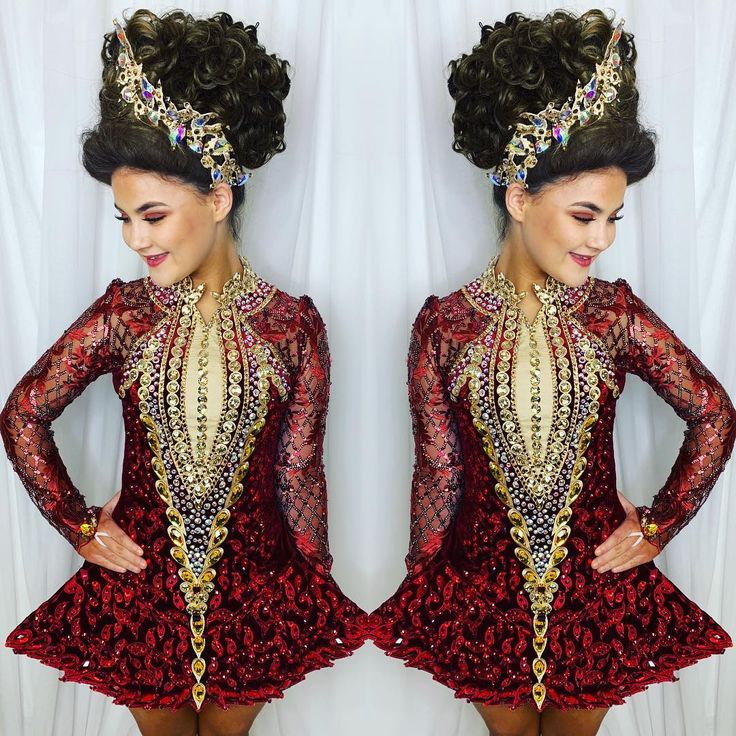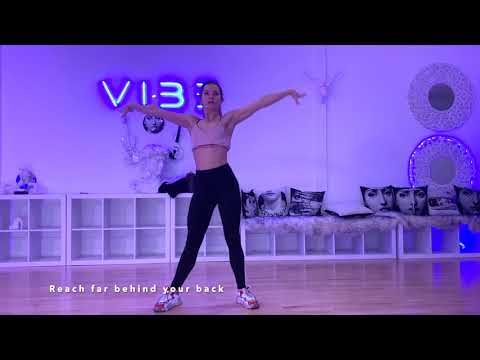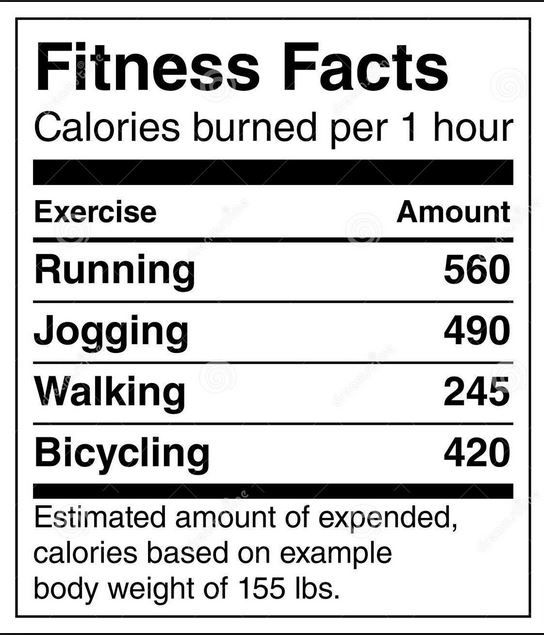How to get dancer legs
6 Moves for Great Dancer Legs
Want to get a major case of leg envy? Just check out a dancer—they always have amazingly sexy stems. But believe it or not, they don't come from dancing alone. “Dancing is great exercise, but it's primarily cardio,” says Akua Noni Parker, a professional dancer and member of the Alvin Ailey American Dance Theater Company. Parker, who has been dancing since the age of three, has performed on stages around the world. Now, you can catch her (and her awesome legs) in action at New York City's Lincoln Center from June 12-16, where she’ll be performing in the acclaimed show Revelations, among others.
These six moves, which Parker does daily, will get your legs in show-off shape, too—even if you have two left feet. “These exercises hit major leg muscles like your quads, hamstrings, and calves—but also target your core and glutes and help with hip stabilization,” says Karen Joseph, a personal trainer and owner of Fountain of Fitness in Valrico, Florida. Pick a few of your faves and add them to any workout—or do all six exercises as one circuit two or three times a week.
Pelvic raises Lie down on your back with your knees bent, feet hip-width apart and resting flat on the floor. Then raise your hips so your body forms a straight line from your shoulders to your knees. Pause, then lower back to the starting position. Repeat slowly 30 times. Position your feet a few inches further away from your body and repeat.
Squats Stand with your feet shoulder-width apart, and lower your body a far as you can by pushing your hips back and bending your knees (while keeping your knees above your ankles). Pause, then push through your heels to return to start. Do 20 reps, then turn your toes out (as if you're doing a plie) and repeat.
Calf raises Hold onto a wall with your feet parallel, hip-width apart. Keep your knees straight and rise up onto your toes as high as you can. Pause, then slowly lower back to the floor.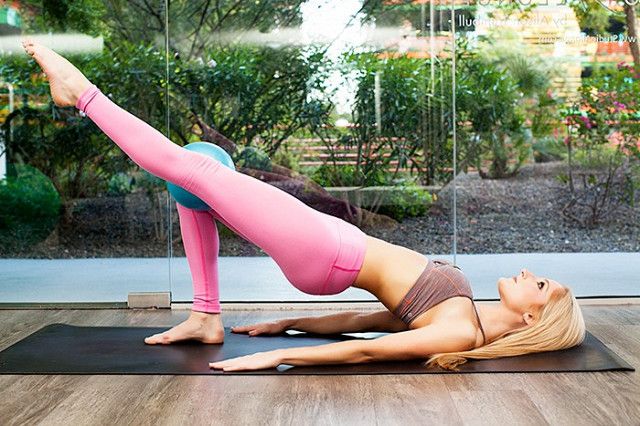 Do 15 reps, and then turn your toes out, heels together, and repeat.
Do 15 reps, and then turn your toes out, heels together, and repeat.
Clams Lie on your left side on the floor, with your hips and knees bent 45 degrees. Your right leg should be on top of your left leg, and your heels should be stacked together. Keeping your feet in contact with each other, raise your right knee as high as you can without moving your pelvis. Pause, then return to the starting position. Don't allow your left leg to move off of the floor.
Single-leg lift Get on your hands and knees and raise one leg off the ground so it’s in line with your body. Your back should be flat, core tight, foot flexed (imagine you’re trying to reach your heel toward the wall behind you). This is the starting position. Keeping your leg straight and, without arching your back, squeeze your glute and raise your leg a few inches toward the ceiling. Pause, then lower back to the starting position. Do 10, then repeat on the other side.
Fire hydrant in-out Start on your hands and knees, then raise your right knee off the ground and bring it toward your chest, keeping your back flat.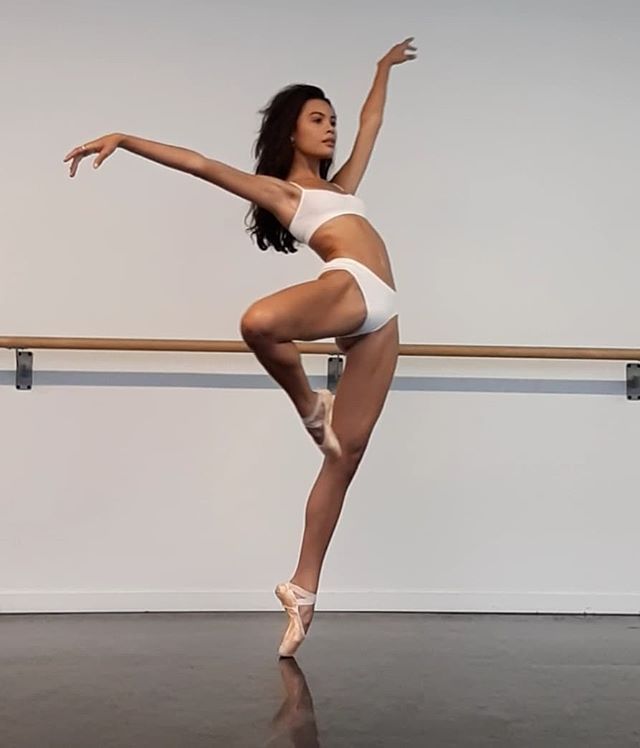 Keeping your right knee bent, raise your thigh out to the side without moving your hips. Slowly lower back to start. Do 10, then repeat on the other side.
Keeping your right knee bent, raise your thigh out to the side without moving your hips. Slowly lower back to start. Do 10, then repeat on the other side.
photo: Alvin Ailey American Dance Theater Company
More From Women's Health:
Get Into the Groove: The Benefits of Dance
Get Sexy Summer-Ready Legs Like J.Lo
Get Lean Legs
6 Ballet-Inspired Exercises for Longer, Stronger Legs
wellness
By Catrina Yohay
Published Jan 5, 2022
Katie Boren is always on the move.
While most of us are waiting for our morning coffee to brew, Boren has already completed a yoga flow or core quickie and is out the door with her dog Murphy for a two or three mile walk. After that, she slips out of her sneakers and into her pointe shoes to get ready for her day job as a corps de ballet member at the American Ballet Theatre.
Between the early morning workouts and the all-day rehearsals, being a professional ballerina is no joke.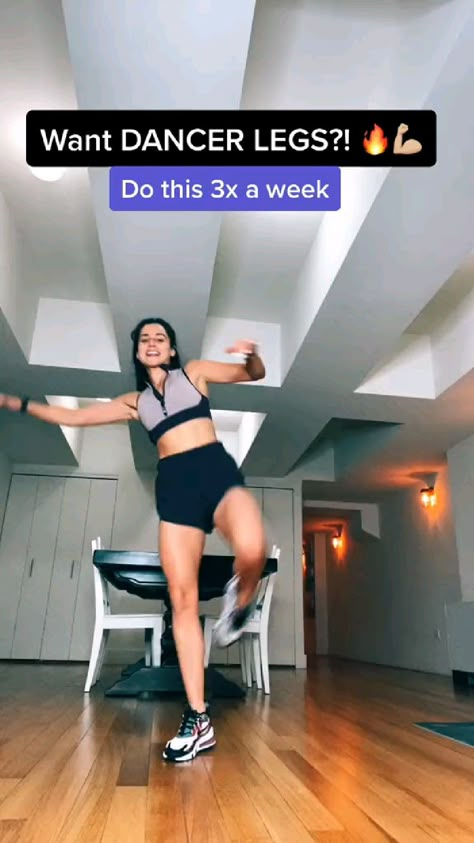 “We start our day with a one-and-a-half-hour technique class,” Boren explains. “Class is usually followed by six hours of rehearsals with a one-hour break in the middle. If I have a light day, I use that break to work in a cardio or strength workout.” When it’s time to go home, Boren is usually spent (can you blame her?), but she always tries to squeeze in a stretch before bed to mitigate some soreness for the next day. On her off days, the work doesn’t stop. “I typically use my free days to work in more intense strength and conditioning workouts,” like cross-training with different types of movements outside of her usual dancer routine. “I believe this is a very important part of keeping my dancing body healthy.”
“We start our day with a one-and-a-half-hour technique class,” Boren explains. “Class is usually followed by six hours of rehearsals with a one-hour break in the middle. If I have a light day, I use that break to work in a cardio or strength workout.” When it’s time to go home, Boren is usually spent (can you blame her?), but she always tries to squeeze in a stretch before bed to mitigate some soreness for the next day. On her off days, the work doesn’t stop. “I typically use my free days to work in more intense strength and conditioning workouts,” like cross-training with different types of movements outside of her usual dancer routine. “I believe this is a very important part of keeping my dancing body healthy.”
With a passion for dance and a desire to provide more people with an opportunity to experience the intricacies of ballet training, Boren teamed up with Equinox instructor Chris Vo to create a new take on the classical ballet class for gym-goers alike. “We created this class for everyone to enjoy and be challenged by with both ends of the fitness spectrum in mind,” Vo says.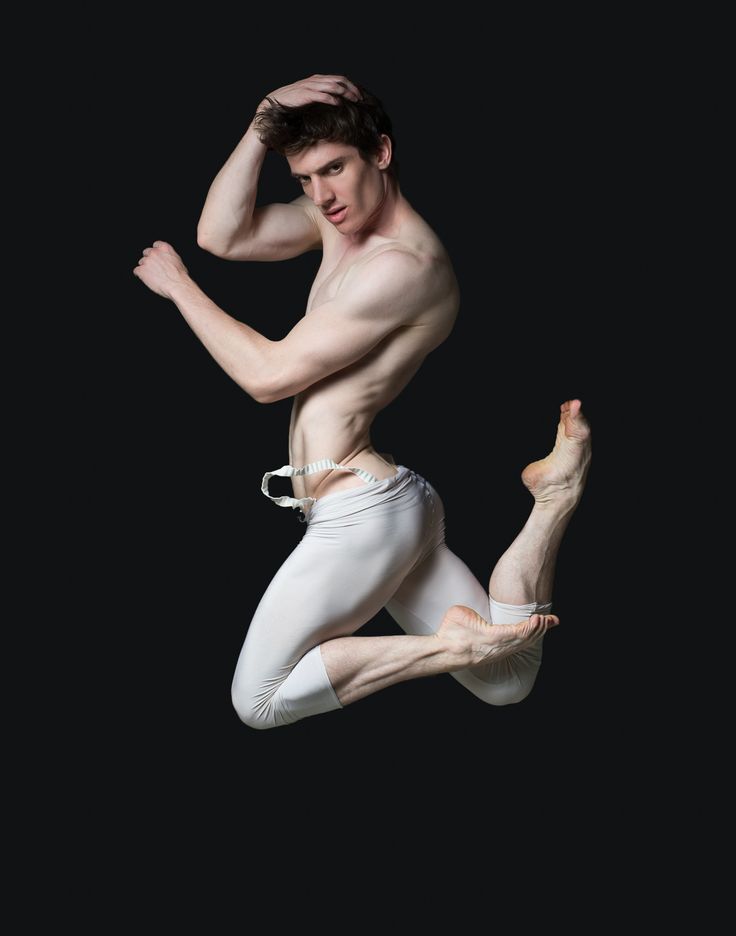 “[It] may serve as a gateway to those who desire to take their barre workout to the next level and/or to satiate those who want to rekindle their love for dance in their past.” The Ballet by Equinox x ABT class features across-the-floor combinations (jeté! Plie! Pirouette!), athletic jumps and Thera-band sequences to help improve posture, flexibility and balance.
“[It] may serve as a gateway to those who desire to take their barre workout to the next level and/or to satiate those who want to rekindle their love for dance in their past.” The Ballet by Equinox x ABT class features across-the-floor combinations (jeté! Plie! Pirouette!), athletic jumps and Thera-band sequences to help improve posture, flexibility and balance.
WHAT ARE THE BENEFITS OF A BALLET-INSPIRED WORKOUT?
If you gave up ballet in the third grade (with no intentions of picking it back up), there are still a ton of benefits you can gain from incorporating ballet-inspired moves into your workout routine. “[Improved] posture is definitely at the top of the list,” Boren explains. “Ballet technique really focuses on proper alignment, and that carries over into these workouts.” And unlike other modalities, it allows you to stretch while strengthening or lengthen while toning, rather than one or the other. “You’re building strength and at the same time you’re increasing your mobility. ” These types of moves are also low impact, meaning they require less stress on your joints and bones (which, ultimately, is better for your body in the long run).
” These types of moves are also low impact, meaning they require less stress on your joints and bones (which, ultimately, is better for your body in the long run).
Inspired by the Ballet by Equinox ABT class, here are six lower-body moves this ballerina swears by for longer, stronger legs.
Katie Boren/Sofia Kraushaar
1. Hamstring Curls With Stability Ball
*Works your glutes, hamstrings and core.
Step 1: Lie on your back with your arms out to your sides, palms facing down. Bend your knees and place your feet up on the stability ball about hip-width apart. Flex your feet and squeeze your glutes and hamstrings to lift your hips up off the ground until your body forms a straight diagonal line from your shoulders to your knees.
Step 2: Engaging your core, extend your legs straight out, rolling the ball away from you. Drive your heels into the ball to roll it back in toward your bum, all while keeping your hips lifted as high as possible.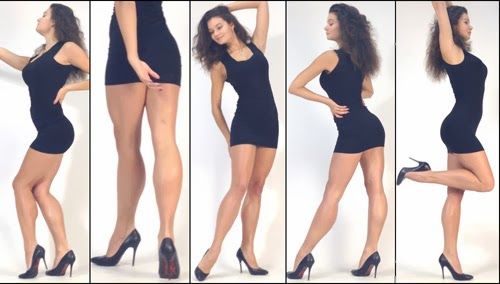 Complete three sets of 8 to 12 reps.
Complete three sets of 8 to 12 reps.
Katie Boren/Sofia Kraushaar
2. Side Plank Clamshells
*Strengthens your hips, glutes, obliques and inner thighs.
Step 1: Lie on your side in a side plank position with your left forearm anchored on the floor. With your upper body lifted, bend the knees so that your heels, hips and shoulders are all aligned.
Step 2: From here, separate your knees into a clamshell, keeping your heels glued together. As your top knee extends, simultaneously lift your hips up off the ground and extend your top arm up and over your head. To modify, place your hand on your hip or on the floor in front of you for added support. Lower back down to the starting position and repeat, completing three sets of 12 to 15 reps on each side.
Katie Boren/Sofia Kraushaar
3. Modified Side Plank Leg Lifts
*You’ll feel this in your inner and outer thighs, shoulders and obliques.
Step 1: Begin in a modified side high plank position, stacking your hand beneath your shoulder and your knee beneath your hip.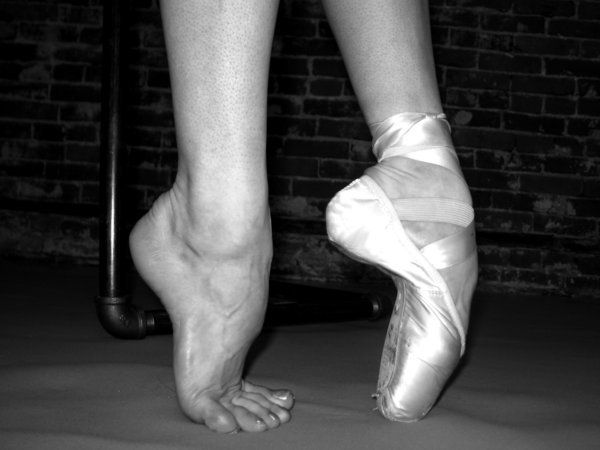 Extend your top leg straight out to the side with your foot pointed, toe resting on the ground.
Extend your top leg straight out to the side with your foot pointed, toe resting on the ground.
Step 2: From here, lift your top leg up until it is slightly higher than your hip (or as far as your mobility allows). Engage your core to keep your hips square, stacked and steady. Extend your arm up over your head and keep your neck in a neutral position. To modify, rest your top arm on your hip. Lower back down to the starting position and repeat, completing three sets of 12 to 15 reps on each side.
Katie Boren/Sofia Kraushaar
4. Side Lying Grand Battement
*Targets your hamstrings, inner thighs and core.
Step 1: Lie on your side, resting your head on your bottom arm. Place your top hand on the ground in front of your chest to help steady your body and make sure your hips are stacked directly on top of each other.
Step 2: From here, grand battement (that’s ballerina for ‘big kick’) the top leg up towards your shoulder keeping your toe pointed.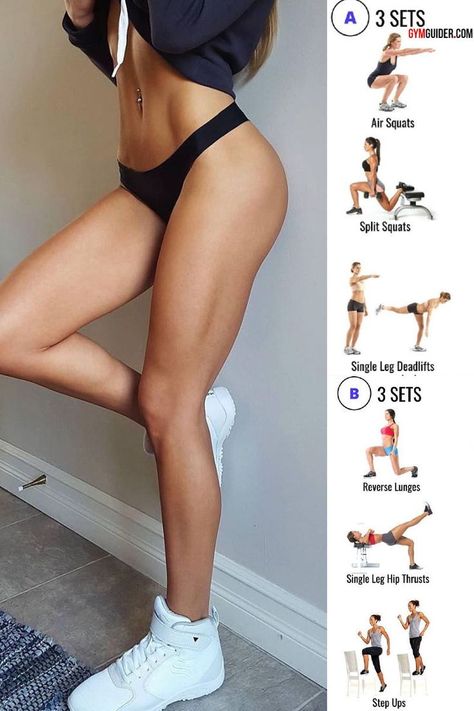 Extend as far as your mobility allows. As you lower the leg back down to the starting position, engage your core and flex your foot to help activate your hamstrings and control the movement. Repeat, completing three sets of 12 to 15 reps on each side.
Extend as far as your mobility allows. As you lower the leg back down to the starting position, engage your core and flex your foot to help activate your hamstrings and control the movement. Repeat, completing three sets of 12 to 15 reps on each side.
Katie Boren/Sofia Kraushaar
5. Calf Raises
*No surprises here, this works your calves! It can also help prevent ankle injuries and shin splints.
Step 1: Using a chair, couch, wall or ballet bar for balance (if needed), begin standing on one leg with your feet parallel.
Step 2: Lift the heel of your working foot and rise up on the ball of your foot to demi pointe. Slowly lower the heel back down and repeat, completing two sets of 10 to 15 reps on each side.
Katie Boren/Sofia Kraushaar
6. Grand Plié Second With Weights
*Targets your hamstrings, inner thighs, glutes and core.
Step 1: Begin in a wide second position with two dumbbells resting on each shoulder (stick to 8 to 15 pounds).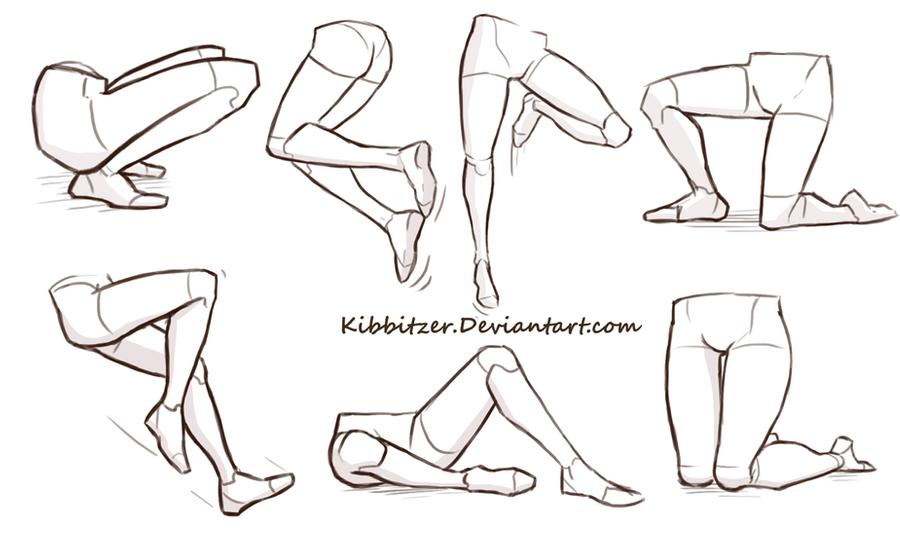 Bend your knees into a plié and lower the hips down to knee height, keeping your core engaged, spine neutral and upper body lifted.
Bend your knees into a plié and lower the hips down to knee height, keeping your core engaged, spine neutral and upper body lifted.
Step 2: At the bottom of the plié, squeeze your glutes and inner thighs to lift the hips up, returning to the starting position. Keep your shoulders (and weights) stacked directly above your hips throughout the movement. Complete three sets of 10 reps.
More Stories You'll Love
wellness
by Dara Katz
From EVs to Gummies, Boomers Are Embracing These 5 Trends in 2023
wellness
by Jaime Wright
Your Weekly Horoscopes: December 4 to 10, 2022
wellness
by Catrina Yohay
Shimmy Is a Workout Advent Calendar App (Yes, Those Exist) That’s Fun, Free & Philanthropic
wellness
by Jaime Wright
Your Monthly Horoscopes: December 2022
wellness
by Sarah Stiefvater
Open Casting, Infla-Dating & 3 More Dating Trends That Are About to be Everywhere in 2023
wellness
by Michaela Magliochetti
'80s and '90s Babies Have Spoken: Here Are 6 Millennial Trends Taking Over in 2023
4 steps to perfect dancer's legs
- Dec 16, 2014
- DANCE-mania, Blog, Video, Health, Exercise
Dancer's feet.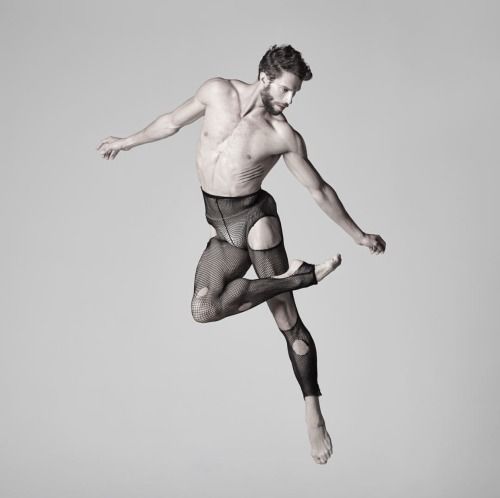 They are not just long and thin. They are strong. They are flexible. And they do not appear easily by themselves.
They are not just long and thin. They are strong. They are flexible. And they do not appear easily by themselves.
This article contains four basic exercises that work your legs from top to bottom, with which you can achieve the perfect dancer's legs.
Trust the experts!
1. Glutes and Hamstrings - Marching leg raises, leaning on the ball.
Strong buttocks not only allow you to move faster and more vigorously, but also help prevent injuries to your knees and lower back.
Lie on your back face up with your knees bent and your feet on a large ball. Raise your hips so that your body forms a straight line from your shoulders to your knees (A). Raise one knee to your chest (B). Then lower back, lift the other knee. Continue the exercise by changing legs.
2. Inner thigh - squats (Standing Plié Squat).
The muscles of the inner thigh, like all other muscles of the upper leg, help stabilize the knee joint.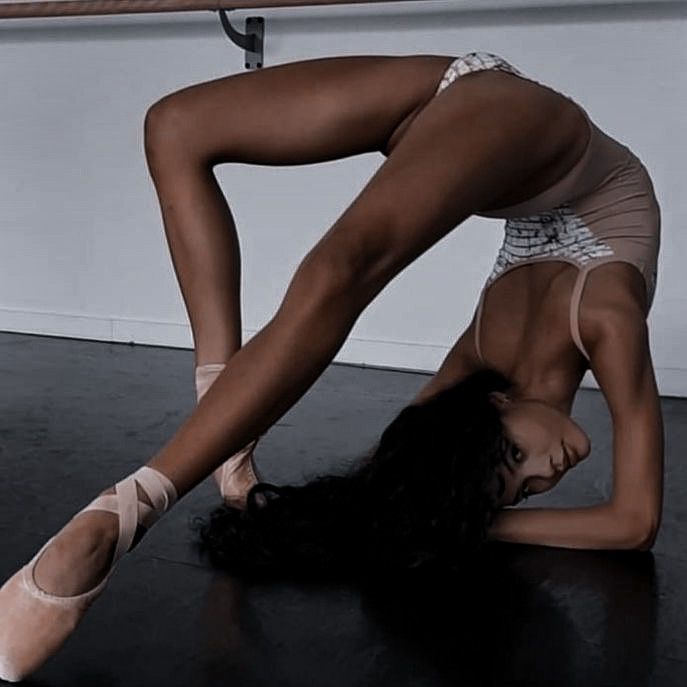 And when it comes to turnout, many dancers try to work from the knee. Strong inner thigh muscles will help you turn your legs exactly where you want them to.
And when it comes to turnout, many dancers try to work from the knee. Strong inner thigh muscles will help you turn your legs exactly where you want them to.
Begin the plie exercise in wide second position, hands in second position with palms up.
Corn the buttocks and muscles of the inner surface of the thigh, getting up and raising your hands over your head.
Return to starting position and do 3 sets of 10 reps at a fast pace.
Let's make it harder! At the end of each rep, hold the plié and do 20 small up and down pulsating movements.
For maximum effect, stay in plie and pulse forward with 20 knees.
for advanced ones: at the end of each series, rub the heel from the floor and squeeze the hip muscles, go up to the half -packages and linger in 10 accounts.
During the exercise, make sure that the muscles of the lower body are involved and that the hips are always kept directly under the shoulders.
For some, this exercise is old hat, but for us it is a classic. The toe raise strengthens both parts of the calf - the calf (the one you usually see on the back of the leg below the knee) and the soleus (which is under it). The next time you're balancing on your toes in a dance studio and trying to reach something on the top shelf, thank your strong calves.
A. Stand next to a chair with your heels together and toes apart. Place your right hand on the back of a chair, your left hand on your belt.
B. Slowly rise up on your toes. Hold at the top for a few seconds, then lower your heels. Repeat 10-15 times.
Be sure to stretch after strengthening exercises!
And finally, inspiring photos of beautiful dancing legs!
Share:
Classical dance, ballet
Exercise at the support or in the middle is a set of training exercises in ballet that contribute to the development of muscles, ligaments, and the development of dancer's coordination of movements.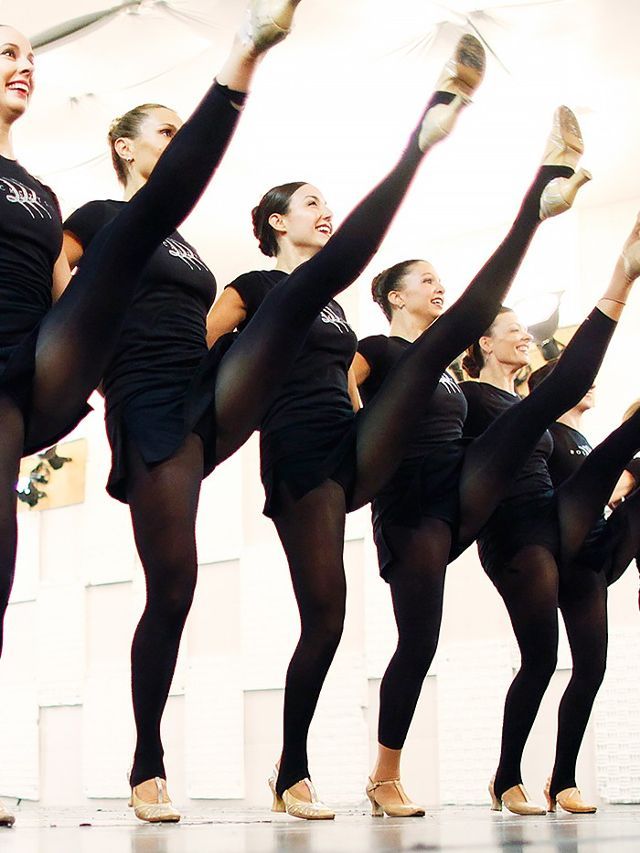 Exercises are performed at the “machine” (attached to the wall with brackets) and in the middle of the training hall daily. The exercise consists of the same elements.
Exercises are performed at the “machine” (attached to the wall with brackets) and in the middle of the training hall daily. The exercise consists of the same elements.
Adagio A part of the dance performed slowly to calm music. The concept is used not only in the sense of music, but also:
A separate dance, or part of a musical and choreographic performance, which are performed by one, two or more soloists. The most common adagio is performed by a duet;
For exercise - exercises at the choreographic barre or in the center of the hall, which consist of a set of poses and exercises, turning elements, inclinations in a calm rhythm. The task of the adagio is to develop stability, expressiveness, musicality, harmony and smooth transitions from one movement to another.
Includes grand plie, develope, revelant, all kinds of balances, pirouettes, turns. A fused bundle for 32, 64 accounts.
Allegro (allegro in Italian means soon, dexterously, quickly) is a set of exercises in the center of the gym, which consists of jumps of different heights and speeds.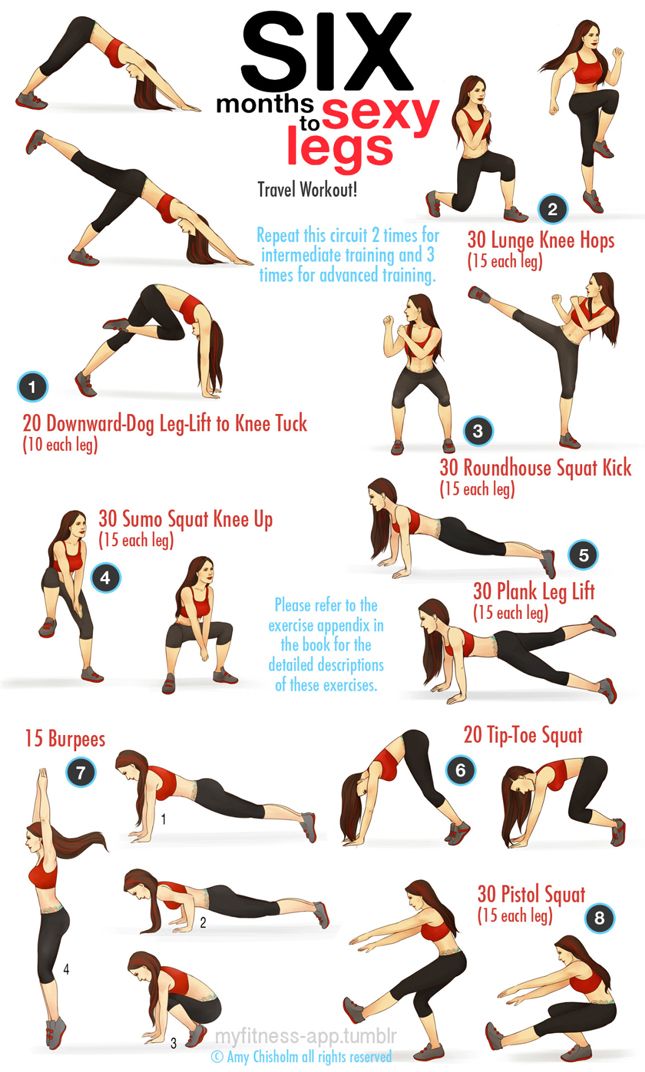
ARABESQUE [arabesque] - a classical dance pose in which the leg is retracted "toe to the floor" at 45 °, 60 ° or 90 °, the position of the torso, arms and head depends on the shape of the arabesque. one of the basic movements in classical choreography. The position of the allongee hands, the gaze rushes into the distance, which gives the pose grace and expressiveness. The arabesque symbolizes an elusive dream; it is the leitmotif of Giselle or the Sylph, popular romantic heroines. During the exercise, the supporting leg can fully stand on the foot, half-toes / fingers, be extended or bent at the knee. Sometimes it is performed with an emphasis on the knee and the removal of the second leg. If the pose is performed in a jump, then the position of the leg may be different (strictly perpendicular to the floor, throwing forward, etc.). The Russian ballet school divides the arabesque into four types. The first two are open (arabesque effacee), the third and fourth are closed (arabesque croisee).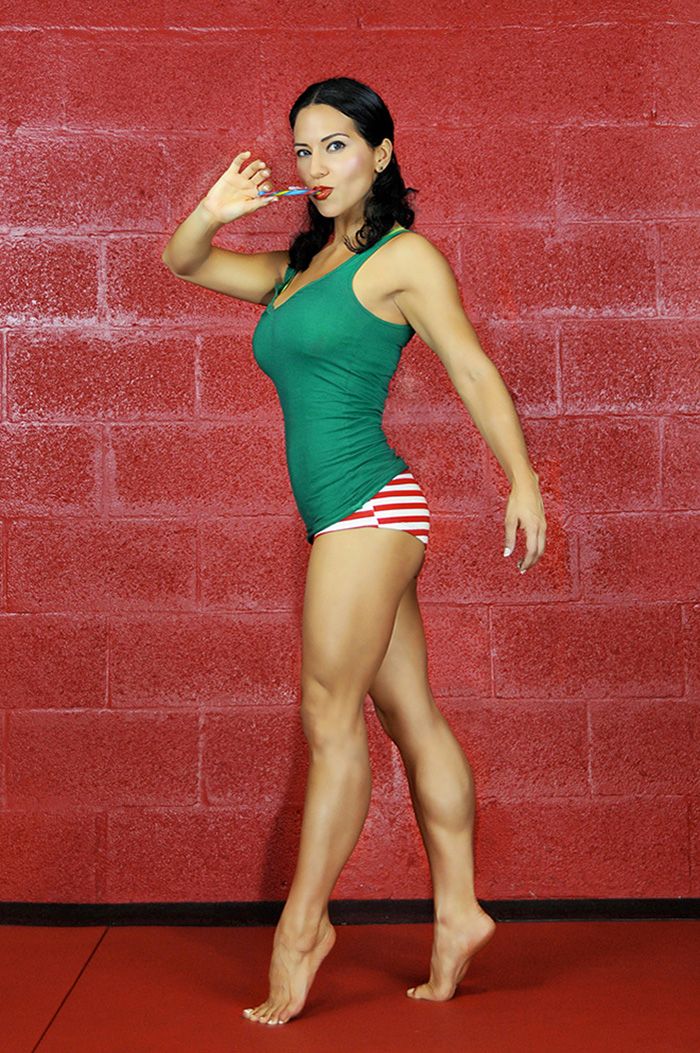 The old ballet school singled out another fifth type of arabesque, in which the body leaned over and the arms were raised forward allongee. Arabesque penchee - a pose in which the body leans forward so that the working leg can rise as high as possible. I,II,III,IV Arabesques.
The old ballet school singled out another fifth type of arabesque, in which the body leaned over and the arms were raised forward allongee. Arabesque penchee - a pose in which the body leans forward so that the working leg can rise as high as possible. I,II,III,IV Arabesques.
ASSEMBLE [aseamble] - a jump from one leg to two is performed with the legs moving in a given direction and collecting the legs during the jump together. When performing this movement, the working leg can open in any direction with the toe on the floor or in the air, while the dancer simultaneously squats on the supporting leg. Then the working leg is placed in the 5th position on the fingers or half-toes. The movement ends in a demi-plie. If the figure is performed in a jump, then the legs are collected at the time of flight. The execution of the jump can be varied: on the spot (leg throw to a small height, small jump petit pas assemble), or with advancement (strong leg throw at 70-90 degrees, extremely high takeoff grand pas assemble). In the first case, the movement begins with a jump and a throw of the leg from the 5th position. A grand pas assemble always requires an approach to achieve maximum jump height. To maintain balance, the arms are caught up in position and help the jump. Additional complications in the form of skids or double turns can give the movement spectacle and virtuosity. The main difference between pas double assemble (performed on fingers or half-toes on a small jump) is that the figure is performed twice from the same foot. If the position is executed to the side, the change of legs to the 5th position is performed at the moment of the second movement.
In the first case, the movement begins with a jump and a throw of the leg from the 5th position. A grand pas assemble always requires an approach to achieve maximum jump height. To maintain balance, the arms are caught up in position and help the jump. Additional complications in the form of skids or double turns can give the movement spectacle and virtuosity. The main difference between pas double assemble (performed on fingers or half-toes on a small jump) is that the figure is performed twice from the same foot. If the position is executed to the side, the change of legs to the 5th position is performed at the moment of the second movement.
ATTITUDE [attitude] - the position of the leg off the floor and slightly bent at the knee. It is one of the main positions in classical choreography. During execution, the working leg bends at the knee and rises back to a height. The supporting leg can stand on the foot, fingers or half-toes, hands in the allondie position.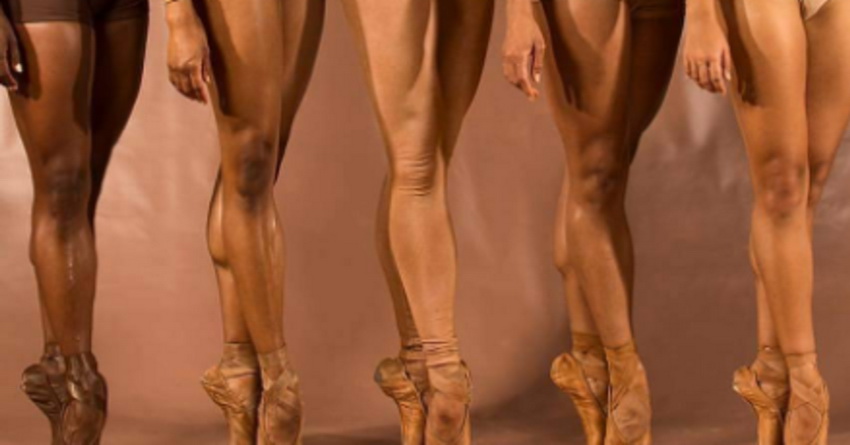 The figure is the basis for a big jump. To perform it, like an arabesque, you need a strong and flexible back. If the attitude is performed forward, the bent leg is lifted forward, and the heel should be above the level of the knee. This is the leitmotif of proud heroines, such as Aurora (ballet "Sleeping Beauty"). In a broad sense, attitude is any posture that a dancer or dancer assumes.
The figure is the basis for a big jump. To perform it, like an arabesque, you need a strong and flexible back. If the attitude is performed forward, the bent leg is lifted forward, and the heel should be above the level of the knee. This is the leitmotif of proud heroines, such as Aurora (ballet "Sleeping Beauty"). In a broad sense, attitude is any posture that a dancer or dancer assumes.
A LA SECONDE [a la segond] - a position in which the performer is located en face, and the "working" leg is open to the side by 90 °.
ALLONGE, ARRONDIE [alonge, arondi] - the position of a rounded or elongated arm. "Reaching", the final movement of the arm, leg, torso.
Aplomb [aplomb] - (balance) - the dancer's ability to stand in one position or another on one leg for a long time.
Balance [balance] - Swing, sway. Swinging motion.
Pas ballonne [pa ballonne] - Inflate, inflate.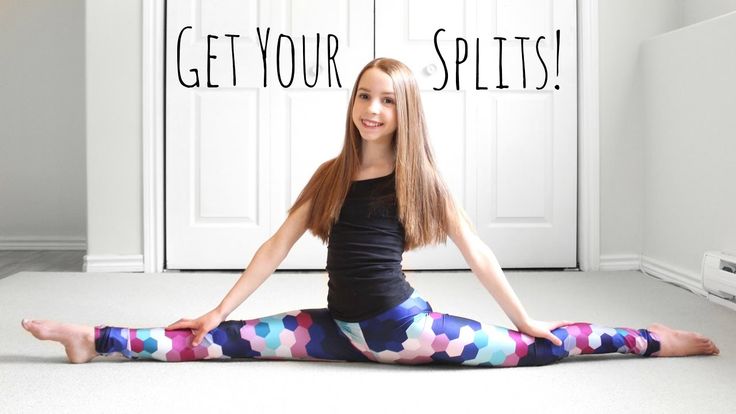 The dance is characterized by advancement at the moment of jumping in various directions and poses, as well as legs strongly extended in the air until the moment of landing and bending one leg on sur le coude pied.
The dance is characterized by advancement at the moment of jumping in various directions and poses, as well as legs strongly extended in the air until the moment of landing and bending one leg on sur le coude pied.
Pas ballotte [pa ballotte] - To hesitate. A movement in which the legs at the moment of the jump are extended forward and backward, passing through the central point. The body leans back and forth, as if hesitating.
balance - "swaying", pendulum movement of the legs forward up - back down, forward - back, forward - back up
Balancoire [balancer] - Swing. Used in grand battement jete.
Batterie [batry] - Drumming. The leg in the position sur le coude pied makes a series of small shock movements.
Pas de bourree [pas de bourree] - Chased dance step, stepping over with little advancement.
Brise [breeze] - Break, crush. Movement from the section of jumps with skids.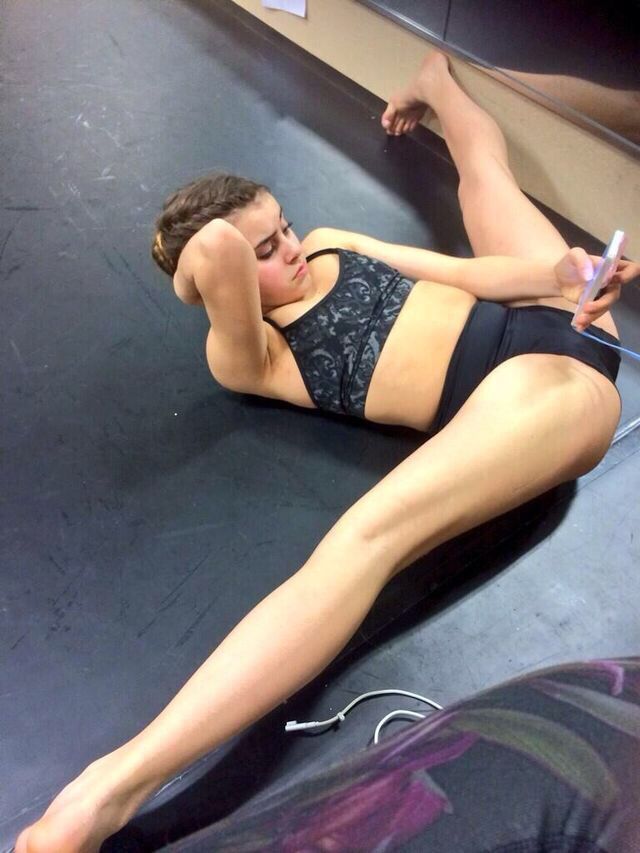
Pas de basque [pas de basque] - Basque step. This movement is characterized by a score of ¾ or 6/8, i.e. triplex. Runs forward and backward.
Battement [batman] - Span, beat.
Battement tendu [batman tandu] - Abduction and adduction of the outstretched leg, extension of the leg. "Elongated" sliding movement of the foot in the position of the foot on the toe forward, to the side, back with the return of the sliding movement to the IP.
B attement tendu jeté - (tandu jet batman) - “throw”, swing to the downward position (25 °, 45 °) with a cross
Battement fondu [battman fondue] - Soft, smooth, “melting” movement. A movement consisting of simultaneous bending of the knees, at the end of which the "working" leg comes to the position sur le cou-de-pied in front of or behind the skating leg, and then follows the simultaneous extension of the knees and the "working" leg opens forward, sideways or back. In modern jazz dance, the fondu form from the folk stage dance lesson is also used.
In modern jazz dance, the fondu form from the folk stage dance lesson is also used.
battement fondu - (batman fondue) - “soft”, “melting”, simultaneous flexion and extension of the legs in the hip and knee joints.
battement frappe - (batman frappe) - Striking movement, or striking movement. A movement consisting of rapid, vigorous flexion and extension of the leg, the foot being brought into sur le cou-de-pied position at the moment of flexion and opening toe to the floor or 45° high at the moment of extension forward, sideways or backward. Frappe [frappe] - Beat.
Battement double frappe
Battement developpe [batman devloppe] - Swing, open, take out the leg 90 degrees in the right direction, pose. Taking out the leg forward, backward or to the side by sliding the "working" leg along the supporting one.
BATTEMENT AVELOPPE [batman avloppe] - the opposite battement developpe movement, the "working" leg from the open position through the passe is lowered to the specified position.
Battement soutenu [batman soutenu] - Sustain, maintain, pull up the legs in the fifth position, continuous movement.
BATTEMENT RELEVELENT - smooth lifting of the leg through sliding along the floor 90 ° forward, sideways or backwards.
1 When learning the vocabulary, it is necessary to remember that the movements of classical dance, borrowed by modern jazz dance, are very often modified. This is especially true of the eversion and parallel position. In this regard, the terminology of classical ballet is given in the dictionary without changes (see All about ballet//S left by E.Ya. Surits. M., 1966, Encyclopedia "Ballet". M., 1981, etc.), and the change in the provisions depends on the context of the lesson. There is often terminological overlap between English and French terminology, for example, temps leve is the same as hop, battement tendu is like brack, kick is like grand battement developpe, etc. In this case, it is necessary to use the movement depending on the specific exercise.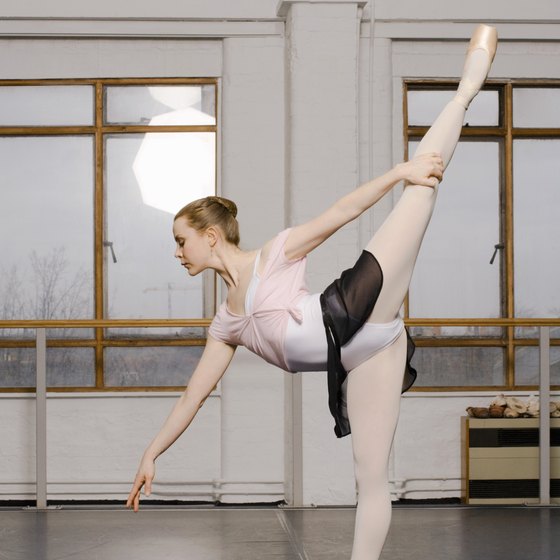
BATTEMENTRETIRE [batman retreat] - transfer through the sliding of the "working" leg, through the passe from the V position in front to the V position behind.
petit battement - (petit battman) - “little blow” - alternately small, short foot strikes in the cou de pied position in front and behind the supporting leg.
grand battement - (grand battman) - “big throw, swing” 90 ° and above through the position of the foot on the toe.
battu- (botyu) - “beat” continuously, small, short blows to the ankle joint only in front or behind the supporting leg.
Cabriole [cabriole] - Jump with knocking one leg over the other.
Chain [shen] - Chain.
Changement de pieds
Changement [shazhman] - Change.
Pas chasse [pa chasse] - Drive, drive. Ground jump with advance, during which one leg knocks out the other.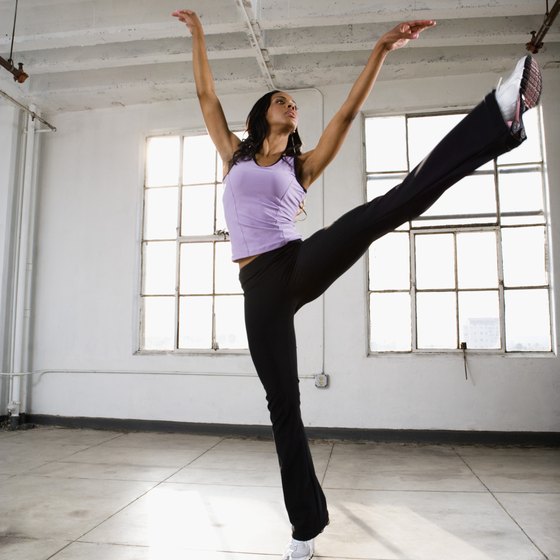
Pas de chat [pas de sha] - Cat step. This jump is similar in character to the gentle movement of a cat's jump, which is emphasized by the curve of the body and the gentle movement of the arms.
Le chat [le sha] - Cat.
Pas ciseaux [pas ciseaux] - Scissors. The name of this jump comes from the nature of the movement of the legs, thrown forward in turn and extended in the air.
Coupe [coupe] — Jerky. Knocking out. Jerky movement, short push.
Pas couru [to smoke] - Running through the sixth position.
Croisee [krause] - Crossing. A pose in which the legs are crossed, one leg covers the other.
Degagee [degagee] - Release, take away. “Transition” from the stance to the left right forward to the toe, step forward through the semi-squat in IV position, straightening up, stance to the right, left back, to the toe. From the stand on the left, right to the side on the toe, step to the side through the semi-squat in II position, stand on the right, left to the side on the toe.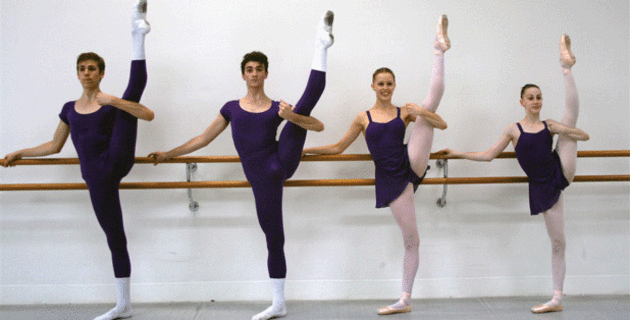
Developpee [devloppe] - Taking out. “Opening”, “deployed”, from the stoic to the left, right with a sliding movement to a bent position (toe at the knee) and its extension in any direction (forward, side, back) or higher.
Dessus-dessous [desu-desu] - Top and bottom, above and below. Pas de bourre view.
double - (double) - “double”, • battement tendu - double heel pressure • battement fondu - double semi-squat • battement frapper - double blow.
Ecartee [ekarte] - Retract, push apart. A pose in which the entire figure is turned diagonally.
- a pose that builds from the epaulement in 5th position with one of the legs abducted to the side. At this time, the body deviates from the waist to the supporting leg. Small ecartee poses are performed with the toe extended to the floor, medium poses with 45 degrees of leg elevation, and large 90o and above. The supporting leg is on a full foot, toes / half toes, the knee is fully stretched, or in a demi-plie position.
 The working leg is extended at the knee, the foot is stretched. The movement can be performed in a jump, the position of the hands is any. The ecartee pose has two types:
The working leg is extended at the knee, the foot is stretched. The movement can be performed in a jump, the position of the hands is any. The ecartee pose has two types: - Ecartee forward. The working leg is open diagonally forward in 2 positions, that is, towards the viewer. At this time, the head is turned in the same direction, raised, the gaze rushes upward;
- Ecartee back. The working leg is open back diagonally in 2 positions, away from the viewer. The head turns to the supporting leg, and the gaze rushes down.
Effacee [eface] - Expanded position of the body and legs. A pose that builds from the epaulement efface in 5th position with the legs moving forward or backward. Small effacee poses are performed with the toe extended to the floor, medium poses at a height of 45 degrees, large poses 90 degrees and above. The position of the supporting leg on the full foot, toes / semi-toes, stretched at the knee, or in demi-plie.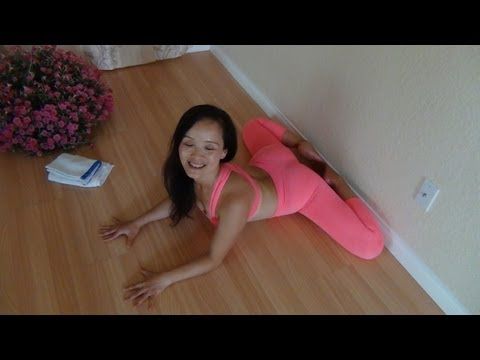 The working leg can be straight or bent at the knee. It is performed in the air, or on a jump. The position of the hands and head can change endlessly, varying the changes in posture.
The working leg can be straight or bent at the knee. It is performed in the air, or on a jump. The position of the hands and head can change endlessly, varying the changes in posture.
Epaulement (from epaule - shoulder) - a position during which the dancer becomes half-turned to the mirror, or to the viewer. Feet, hips and thighs are turned to the right or to the left side of the viewer by 45o or 135o. The head turns to the shoulder, which is directed forward. This position gives the dance three-dimensionality, makes it more expressive and artistic. When performing, the dancer must control the angle of the head, the position of the shoulders and the direction of the gaze.
- Epaulement croise (verb croiser - to cross) - a pose during which the legs are in any crossed position (3,4,5). The shoulder and leg of the same name are turned towards the viewer. The head turns towards the turned shoulder. This position allows you to take any posture through the open leg;
- Epaulement efface (verb effacer - to remove, hide) - a pose during which the legs are in any crossed position (3,4,5), but the leg opposite to the shoulder turned towards the viewer is in front.
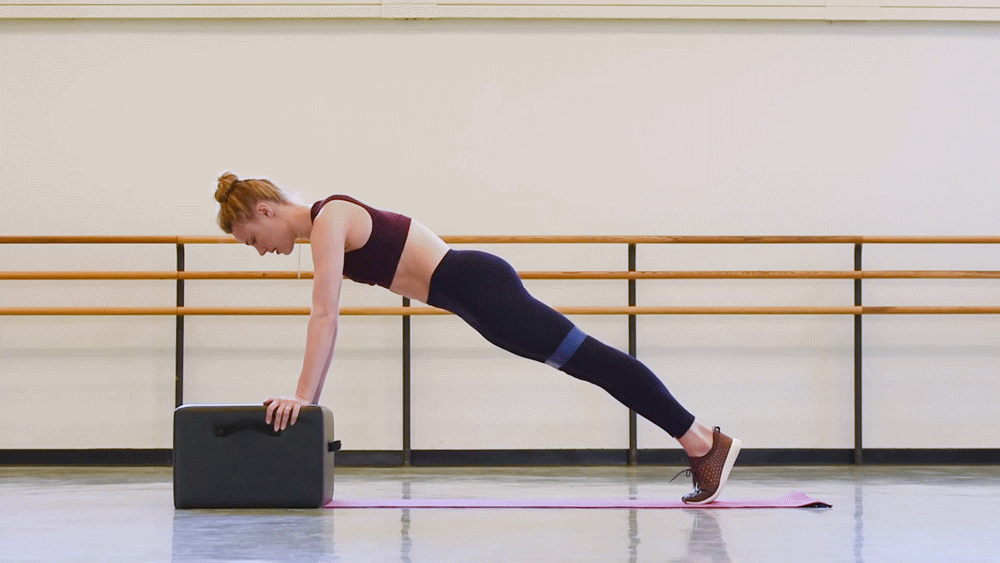 This position allows you to take any position effacee through the opening of the leg forward or backward.
This position allows you to take any position effacee through the opening of the leg forward or backward.
Echappe [echappe] - Break out. Jump with legs opening to the second position and collecting from the second to the fifth.
Pas emboite [pa ambuate] - Insert, insert, stack. A jump during which there is a change of half-bent legs in the air.
Entrechat [entrechat] - Jump with a skid.
En dehors [an deor] - Out, from the circle. Circular movement away from you, circular movement outward at the hip or knee joint, as well as turns.
En dedans [an dedan] - Inside, in a circle. Circular motion towards yourself, circular motion inward.
En face - Straight, straight position of the body, head and legs.
En tournant [an turnan] - Rotate, turn the body while moving.
Fouette [fuete] - Whip, flog.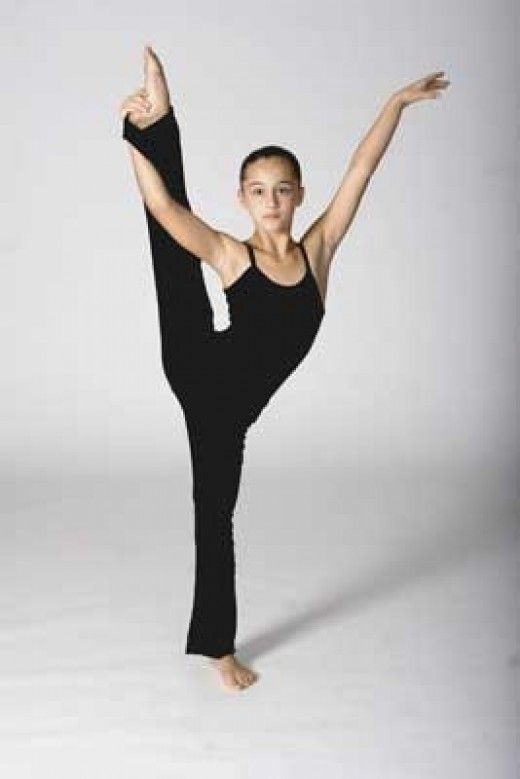 A kind of dance turn, fast, sharp. The open leg bends towards the supporting leg during the turn and opens again with a sharp movement.
A kind of dance turn, fast, sharp. The open leg bends towards the supporting leg during the turn and opens again with a sharp movement.
This movement has several variations:
- Fouette en tournant at 45° En dehors. At the moment when the left leg is in demi-plie, the right leg is opened in 2 positions by 45 degrees, tout en dehors on the left leg. At the moment of execution, the working leg touches the supporting leg on the calf. The hands at this time are in the preparatory, or first position. The stop is performed on a demi-plie, arms and legs open in 2 positions. The movement begins with the right foot, while the supporting one does not collapse. If Fouette is performed several times in a row, it begins with preparation in 4 positions, rising to pointe shoes, performing tour en dehors;
- Fouette en tournant for 45° En dedans is performed in the same way, but the working leg first goes in front of the calf and then back. The exercise is mandatory in the tutorial, but rarely seen on stage;
The French ballet school is similar to the Russian one. Movements: les fouettesen dedans et endehors, les fouettes sautes, les fouettes sur pointes ou demi-pointes. The dancer performs a pique on the right foot. At this time, the left one rises forward, the dancer performs a tour on her finger (surlapointe) or half-finger (demi-pointe), and the left one remains extended in the air. The movement ends at en arabesque sur pointe (oudemi-pointe).
Movements: les fouettesen dedans et endehors, les fouettes sautes, les fouettes sur pointes ou demi-pointes. The dancer performs a pique on the right foot. At this time, the left one rises forward, the dancer performs a tour on her finger (surlapointe) or half-finger (demi-pointe), and the left one remains extended in the air. The movement ends at en arabesque sur pointe (oudemi-pointe).
American Ballet School Fouette en tournant at 45° En dehors. In contrast to the Russian school, where the working leg during the tour touches the middle of the calf from behind, and then goes to the front of the calf of the left leg (petit Battement), in the American school the working leg performs a demi rond at 45 °. This gives the figure an additional force, but at the same time it can threaten to “release the hip” and the ballerina to leave the axis. Due to this execution, Fouette is performed with advancement to the side or forward.
- Grand Fouette. He absorbed the teachings of the French and Italian schools;
- Les fouette sendehors.
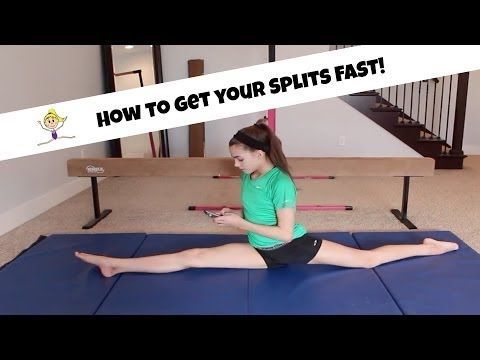 The croisee pose marks the back of the left leg. Coupe on the half-toes of the left leg, hands go to the second position, the left leg goes down to the demi-plie, and the left hand to the 1st position. At the moment when the dancer moves her half-bent right leg forward 90 degrees, she rises to the half-toes of her left, quickly circles the Grand rond de jambe with her right leg back and finishes on her left leg in demi-plie in III arabesque (in the en face position - facing the viewer ). Hands perform Port de bras: the left is raised to position 3 and passes to 2, while the right is transferred to 3 and passes through the right to III arabesque when lowering the left leg into a plie;
The croisee pose marks the back of the left leg. Coupe on the half-toes of the left leg, hands go to the second position, the left leg goes down to the demi-plie, and the left hand to the 1st position. At the moment when the dancer moves her half-bent right leg forward 90 degrees, she rises to the half-toes of her left, quickly circles the Grand rond de jambe with her right leg back and finishes on her left leg in demi-plie in III arabesque (in the en face position - facing the viewer ). Hands perform Port de bras: the left is raised to position 3 and passes to 2, while the right is transferred to 3 and passes through the right to III arabesque when lowering the left leg into a plie; - Les fouette sendedanse tendedans - identical execution principle;
- Grand Fouette en tournanten dedans. The dancer stands in a croisee position forward with her left foot, descends into a demi-plie on her left foot, jumps on half-toes and throws her right foot into position 2 (alaseconde) at 90 ° (120 °) - Grand battement jete.
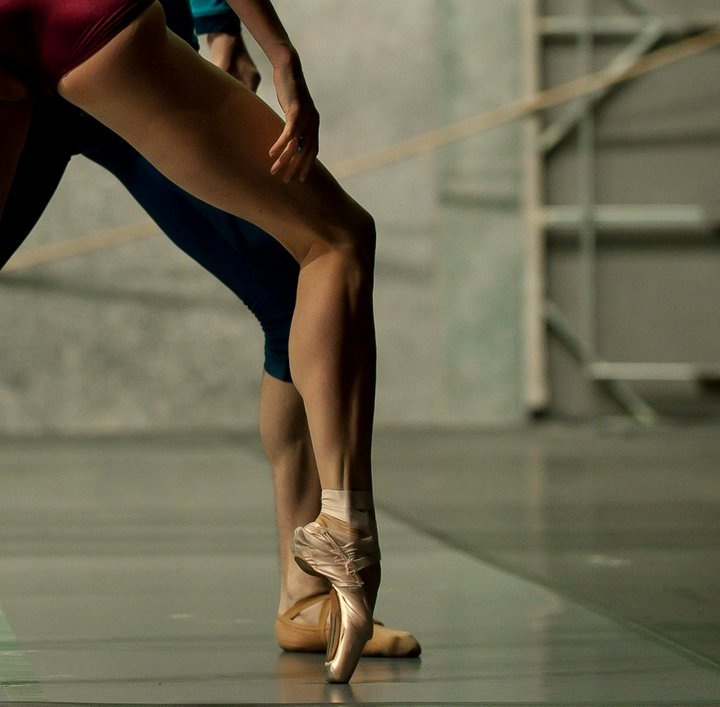 During the turn, he swings his right leg through the passe parterre (passing position). At this moment, the supporting leg rotates on half-toes, and the right leg remains at the same height.
During the turn, he swings his right leg through the passe parterre (passing position). At this moment, the supporting leg rotates on half-toes, and the right leg remains at the same height. - Grand Fouette entournanten dedans. Or Italian fuete. It is performed on the fingers in the same way. The only difference is that the movement does not begin with plie, but with surlecou depied. Ends in attitude on pointe shoes. 3 position for the right hand and the first for the left.
- Grand Fouette en tournant saute execution is the same as Grand Fouette en tournan tendedans, only the left leg leaves the floor in a jump, the turn is performed in the air on a jump of the left leg.
Ferme Close.
Pas failli [pa fayi] - Hook, stop. Weakening movement. This movement is fleeting and often serves to prepare the springboard for the next jump. One leg seems to undercut the other. "Flying", IP - 5th position right in front.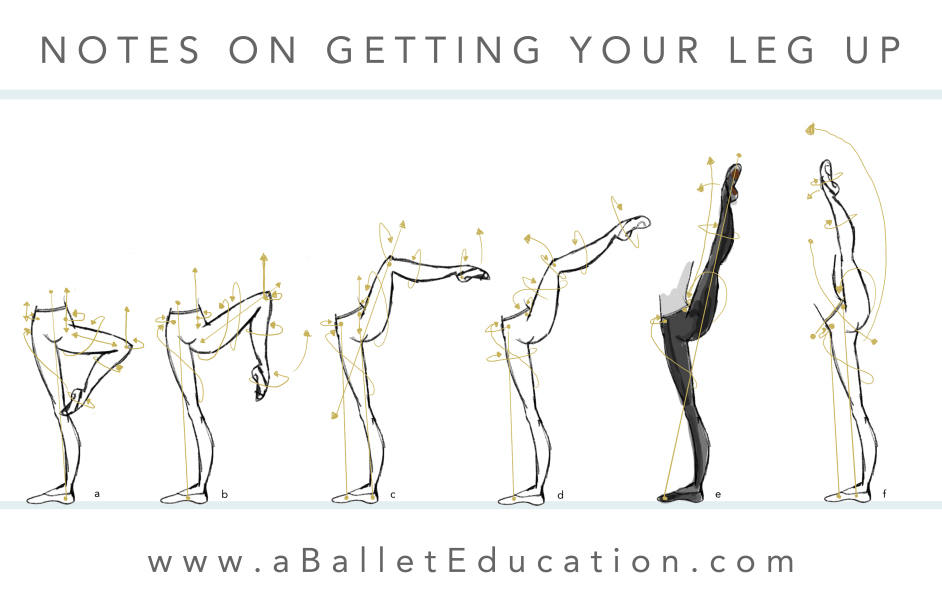 Push 2 jump up, dropping into a cross lunge left to the side, left hand up, right back - push left and swing right back down jump up 2 hands down.
Push 2 jump up, dropping into a cross lunge left to the side, left hand up, right back - push left and swing right back down jump up 2 hands down.
Galloper [gallop] - Chase, chase, jump, race.
Glissade [glissade] - Slide, slide. A jump performed without lifting the toes off the floor.
Grand [large] - Large.
Jete entrelacee [jete entrelacee] - Flip jump.
Entrelacee [entrelace] - Bind.
Jete [jete] - Throw. Throw a leg in place or in a jump.
Jete ferme [jete ferme] - Closed jump.
Jete passé [jete passe] - Passing jump.
Lever - Raise.
Pas [pa] — Pitch. Movement or combination of movements. It is used as equivalent to the concept of "dance".
pounte - (pointe) - “on the toe”, “touching the toe” from the stoic on the left, right forward, to the side or back on the toe swing in any direction with a return to the IP.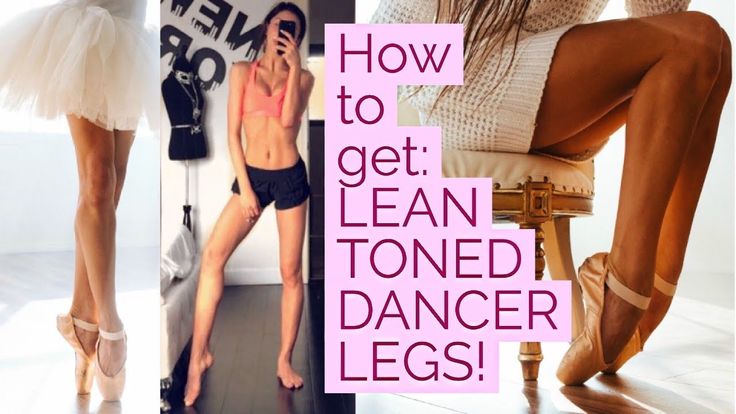
por de bras - (por de bra) - (Porter - wear, Bras - hand) - correct transfer of hands to the main positions (1,2,3), rounded (Arrondi), elongated (Allonge) with a turn or tilt of the head, body. There are port de bras the first, second and third.
Pas d'achions [pas d'axion] - Effective dance. Pas de deux [pa de deux] - Dance of two performers, a classical duet, usually a dancer and a dancer. Pas de trois [pas de trois] - Dance of three performers, a classical trio, usually two dancers and one dancer. Pas de quatre [pas de quatre] - Dance of four performers, classical quartet.
Passe [passe] - Conduct, pass. Connecting movement, holding or moving the leg, “pass”, “pass”, the position of the bent leg, the toe at the knee: in front, to the side, behind.
Petit [pet] - Small.
Petit battement [petit batman]
Pirouette [pirouette] - Yule, turntable. Fast rotation on the floor.
Fast rotation on the floor.
Plie [plie] - Squat. Demi-plie [demi plie] - Half squat. Grand plie - (grand plie) - deep, big "squat".
Pointe [pointe] - Sock, fingers.
Preparation [preparation] - Preparation, preparation.
Releve [releve] - Raise, elevate. Rise on fingers or on half-fingers. "Lifting", lifting to a rack on toes with lowering to the IP in any position of the legs. Releve, temps is a preparatory movement for performing tours and pirouettes. In its purest form, it is a preparation for rotations. Petit temps releve a la 2nd: working leg in surlecou-de-pied position, supporting leg in squat, hands in first position. The semi-bent working leg is brought to the side at a height of 45-60 degrees, while the supporting leg is leveled or stands on the toes/half toes. Hands open in 2 position. Temps releve endehors is performed from the surlecou-de-pied position in front, endans from the surlecou-de-pied position at the back.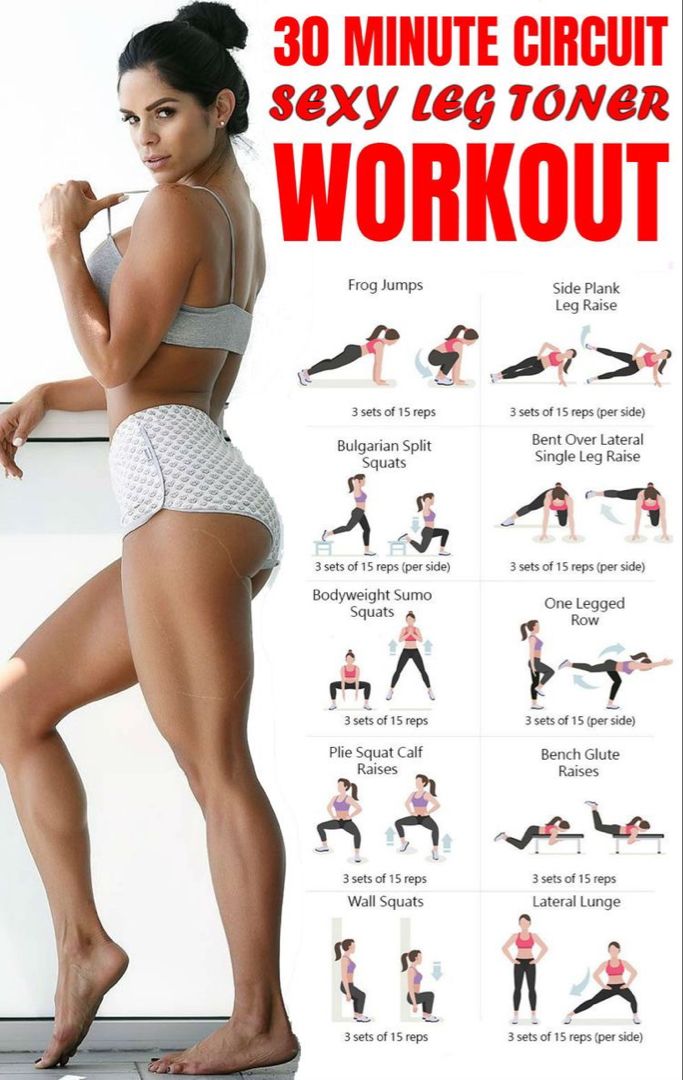 Grand temps releve a la 2nd - the same exercise, but the working leg is displayed for more than 90 degrees.
Grand temps releve a la 2nd - the same exercise, but the working leg is displayed for more than 90 degrees.
Relevelent - Slow leg lift 90 degrees. “Raise” slowly, smoothly slowly at the expense of 1-4 1-8 raising the legs forward, sideways or back and higher.
Renverse [ranverse] - Overturn, turn over. Overturn the body in a strong bend and in a turn.
rond dejamb parterre
Rond [rond] - Circle. demi rond - (demi rond) - incomplete circle, semicircle (toe on the floor, on 45ana 90° and above).
Rond de jambe en l'air [ron de jambe en l'air] - circle with the foot in the air, stand on the left right to the side, circular movement of the lower leg out or in.
Soute [sote] - Jump in place in positions.
Simple [sample] - Simple, simple movement.
Sissonne [sison] - Does not have a direct translation. It means a type of jump, varied in form and often used.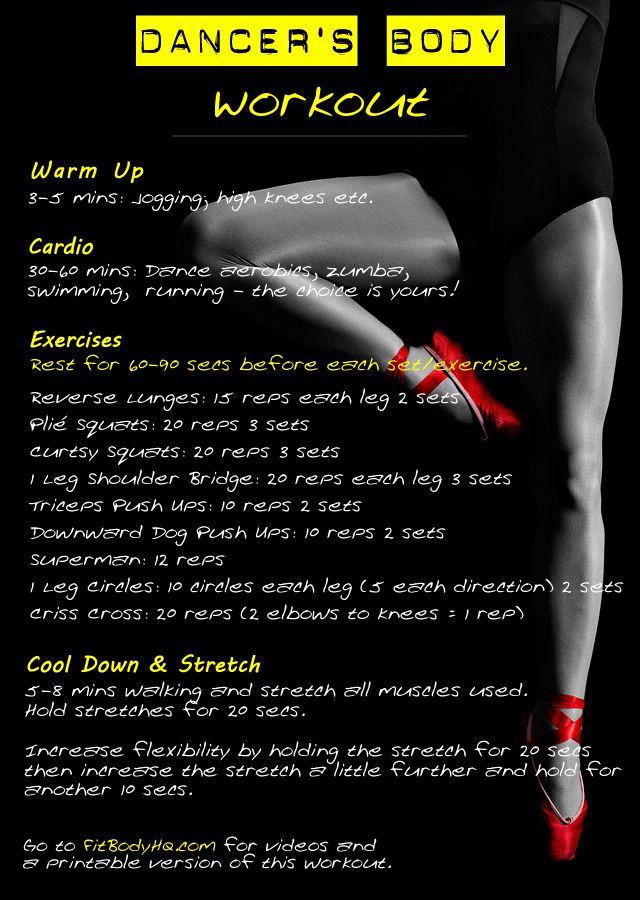
Sissonne fermee [sison farm] - Closed jump.
Sissonne ouverte [sison overt] - Jump with leg opening.
Sissonne simple [sison sample] - A simple jump from two legs to one.
Sissonne tombee [sison tombee] - Jump with a fall.
Saut de basque [so de basque] - Basque jump. Jump from one foot to another with a turn of the body in the air.
Soutenu [sutenu] - Withstand, support, retract.
Sur le cou de pied [sur le cou de pied] - position of the foot on the ankle (at the narrowest point of the leg), the position of the bent leg on the ankle joint in front or behind.
Temps lie [tan lie] - Bound in time. Connecting, smooth, continuous movement. Small adagio, 1-half squat on the left, 2 - right forward on the toe, 3 - shift the center of gravity to the right, left back on the toe, 4-IP 5. the same to the side and back.
Temps leve soutee [tang leve soutee] - Jumping in first, second or fifth position on the same foot.